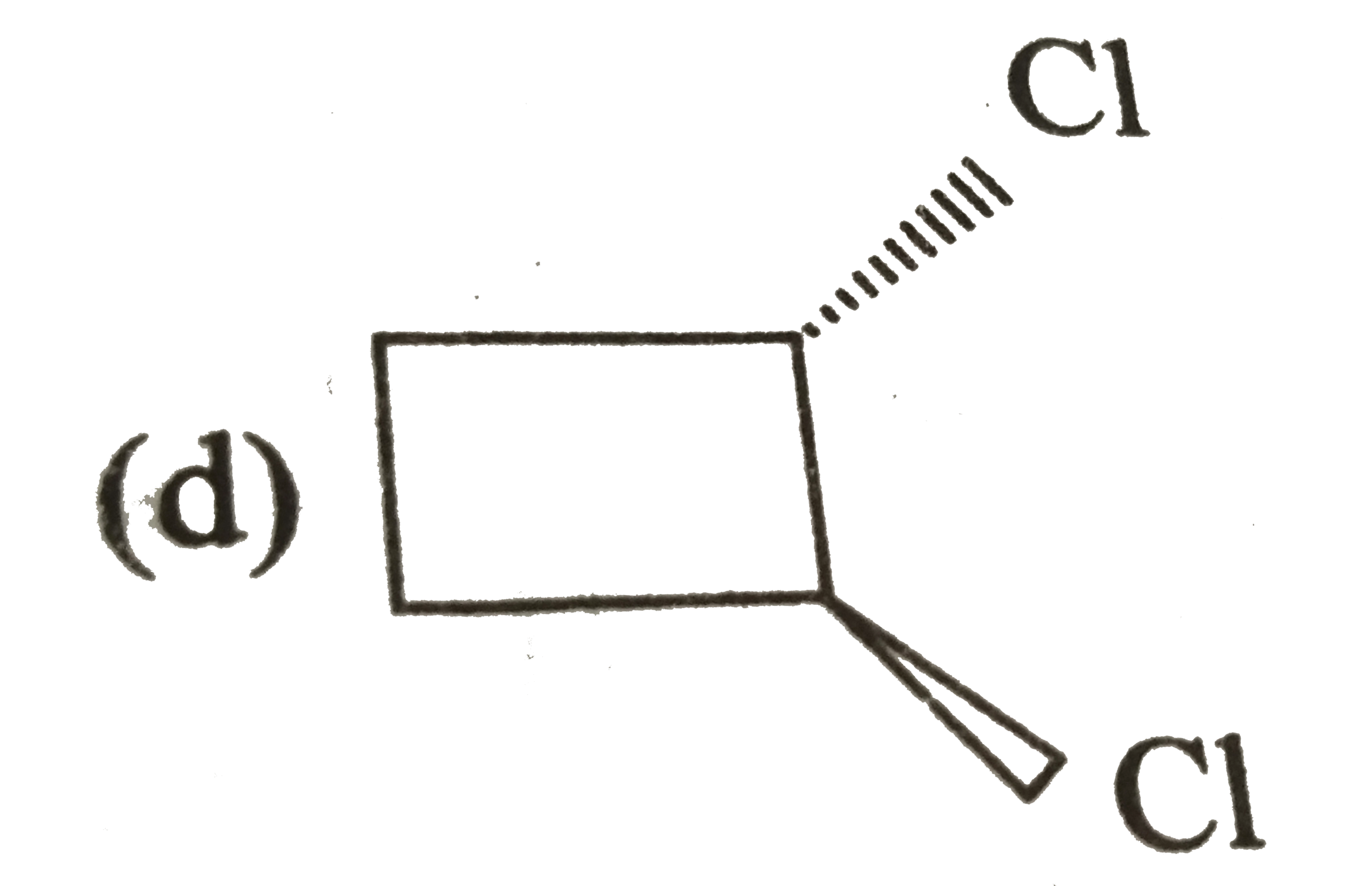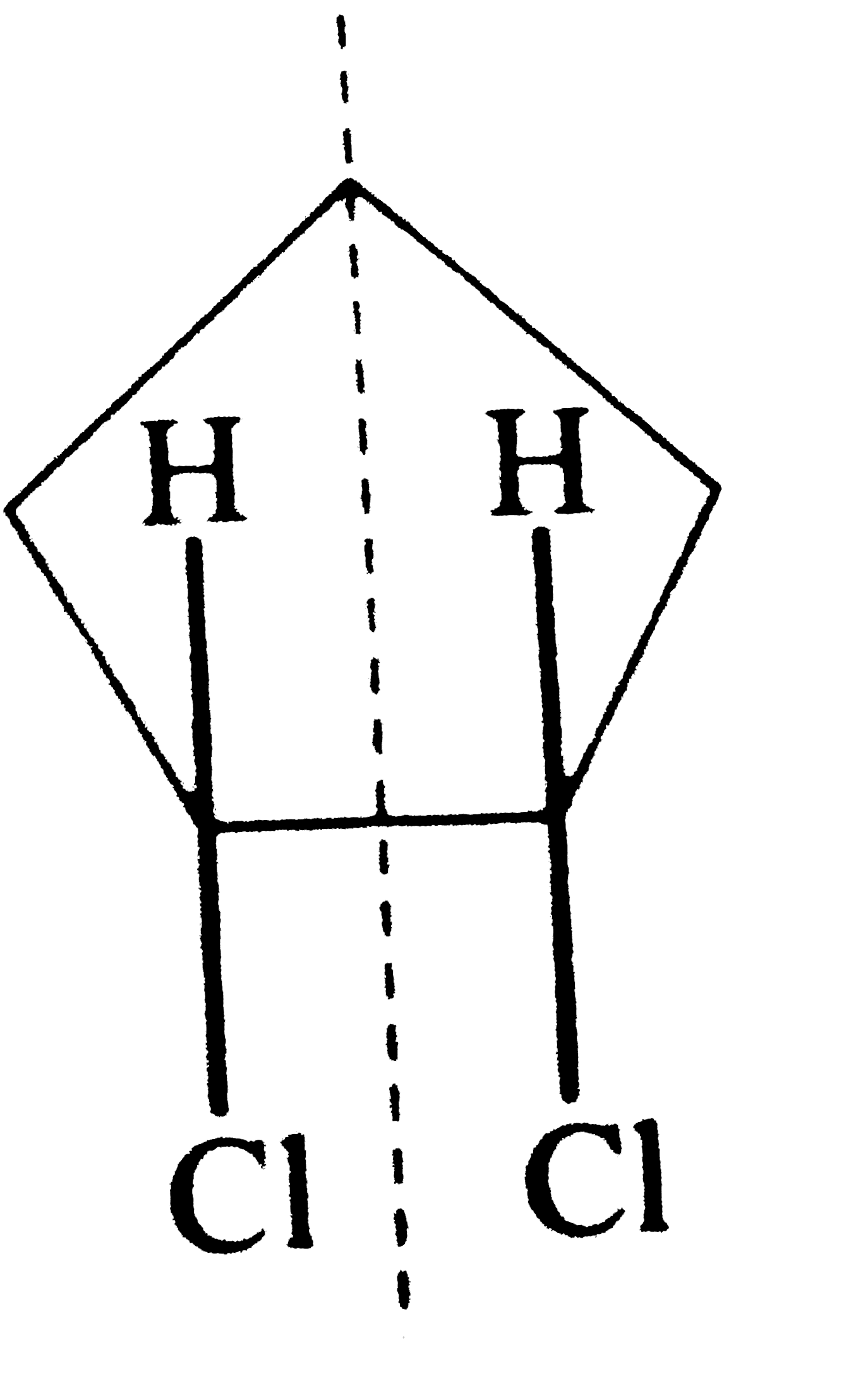Which of the following compounds is optically active ?




The correct Answer is:B, C, D
To determine which of the given compounds is optically active, we need to follow these steps:
Step 1: Identify Chiral Centers
A compound is optically active if it contains at least one chiral carbon atom. A chiral carbon is defined as a carbon atom that is bonded to four different groups.
Step 2: Analyze Each Compound
We will analyze each compound provided in the question to check for chiral centers and symmetry.
Compound 1:
- Structure: Benzene ring with substituents.
- Analysis: This compound has multiple chiral centers, but it also exhibits symmetry. If we divide the compound, the two halves are identical. Thus, it is not optically active.
Compound 2:
- Structure: Contains a chiral carbon with different substituents.
- Analysis: This compound has one chiral center and does not exhibit symmetry. Dividing it does not yield two equal halves. Thus, it is optically active.
Compound 3:
- Structure: Similar to Compound 2, with a benzene ring and substituents.
- Analysis: This compound has multiple chiral centers and does not exhibit symmetry. Dividing it does not yield equal halves. Thus, it is optically active.
Compound 4:
- Structure: Contains three chiral centers.
- Analysis: Although it has chiral centers, it exhibits symmetry. If we divide it, we get two equal halves. Thus, it is not optically active.
Conclusion
From the analysis:
- Optically Active Compounds: Compound 2 and Compound 3.
- Not Optically Active Compounds: Compound 1 and Compound 4.
Final Answer
The compounds that are optically active are Compound 2 and Compound 3.
---
A compound is optically active if it contains at least one chiral carbon atom. A chiral carbon is defined as a carbon atom that is bonded to four different groups.
We will analyze each compound provided in the question to check for chiral centers and symmetry.
- Structure: Benzene ring with substituents.
- Analysis: This compound has multiple chiral centers, but it also exhibits symmetry. If we divide the compound, the two halves are identical. Thus, it is not optically active.
- Structure: Contains a chiral carbon with different substituents.
- Analysis: This compound has one chiral center and does not exhibit symmetry. Dividing it does not yield two equal halves. Thus, it is optically active.
- Structure: Similar to Compound 2, with a benzene ring and substituents.
- Analysis: This compound has multiple chiral centers and does not exhibit symmetry. Dividing it does not yield equal halves. Thus, it is optically active.
- Structure: Contains three chiral centers.
- Analysis: Although it has chiral centers, it exhibits symmetry. If we divide it, we get two equal halves. Thus, it is not optically active.
From the analysis:
- Optically Active Compounds: Compound 2 and Compound 3.
- Not Optically Active Compounds: Compound 1 and Compound 4.
The compounds that are optically active are Compound 2 and Compound 3.
Topper's Solved these Questions
- ISOMERISMBook:MOTIONChapter:ISOMERISMExercise:Exercise 3
Explore 21 Videos
- ISOMERISMBook:MOTIONChapter:ISOMERISMExercise:Exercise 4
Explore 26 Videos
- ISOMERISMBook:MOTIONChapter:ISOMERISMExercise:Exercise 1
Explore 51 Videos
- IONIC EQUILIBRUIMBook:MOTIONChapter:IONIC EQUILIBRUIMExercise:Exercise -4 (Level -II)
Explore 14 Videos
- LIQUID SOLUTIONBook:MOTIONChapter:LIQUID SOLUTIONExercise:EXERCISE-4 (Level-II) PREVIOUS YEAR JEE ADVANCED
Explore 19 Videos
Similar Questions
Knowledge Check
Which of the following compound is optically active
AC2H5−OHB(CH3)2CHCH3−ClCCH3−CHClC2H5DCCl2F2Which of the following compound is optically active
A B
B C
C D
D
Which of the following compound s is optically active ?
A1-butanolBEthanolC2-butanolDlsopropyl alcohol
Which of the following compound is not optically active?
View SolutionWhich of the following compound is not optically active?
View SolutionA line which bisects a compound in two equal parts and both parts appear to be the mirror image of each other, such kind of symmetry is known as plane of symmetry

Any molecule that has a internald mirror palne of symmetry cannot be chiral, even thought it may contain asymmetric carbon atoms.
Which of the following compound optically active?
View SolutionWhich of the following compounds will be optically active ?
View SolutionWhich of the following compounds will be optically active?
View Solution

